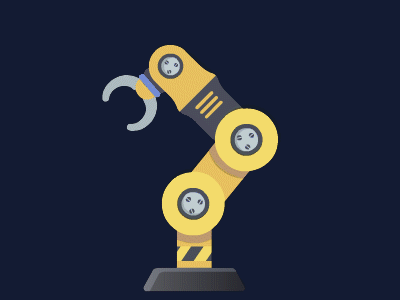Overview: Search algorithms for problems in partially observable, nondeterministic, unknown, and continuous environments
Readings:
- AIMA: Chapter 4.1
- Further information: Chapter 4.2-4.5
- For another viewpoint and some extensions, check out Charles Isbell and Michael Littman’s Machine Learning course section on this topic: Randomized Optimization
Other Resources:
- R&N slides on Beyond Search
- ubalklen / Artificial-Intelligence-Course-Notes//optimization.md
- UC Berkeley: CS 188- Note 2: CSPs, Local Search
- CS50 AI- Lecture 3- Optimization
Local Search and Optimization Problems
Local search methods work through iterative improvement, moving to neighboring states while maintaining only a small number of states in memory. Local search can solve optimization problems, where the goal is to find the best state according to an objective function, without worrying about the path to the state.

In a state-space landscape, when the value of the objective function corresponds to elevation, the aim is to find the highest peak- a global maximum- using hill climbing. If elevation corresponds to cost, gradient descent is used to find the lowest value- a global minimum.
Hill-Climbing Search
”Like climbing to the top of Mount Everest in a thick fog with amnesia”
The hill-climbing search algorithm iteratively moves from the current state to the neighboring state in the direction of steepest ascent (highest objective value). It terminates when it reaches a “peak” where all neighbors have lower value than the current state.

Hill climbing is sometimes called greedy local search because it grabs a good neighbor state without thinking ahead about where to go next. It can rapidly progress towards a solution because it’s usually quite easy to improve a bad state. For example, for the following N-queens problem with 4 queens, it takes just 2 steps to arrive at a solution:

In fact, local search appears to run in constant time and almost always solves n-queens instantaneously with very large n (e.g. 1 million).
However, the “greediness” of hill climbing makes it vulnerable to getting stuck due to local maxima, which are peaks compared to neighboring states but not the global maximum, as well as plateaus, flat areas in the state-space landscape that can be flat local maxima with no uphill exit, or shoulders, which may go up at some point.

For the [Eight Queens Puzzle], when starting from a randomly generated 8-queens state, hill climbing gets stuck 86% of the time. Considering a state space with 8^8^ = 17 million states, the algorithm works quickly, averaging 4 steps when it succeeds and 3 when stuck.
To solve more problems, we can approach the plateau issue by allowing random sideways moves in the case of a shoulder, but this would cause an infinite loop on a flat local maximum. Limiting the number of consecutive sideways (e.g. 100) can improve the percentage of successful instances from 14% to 94%, but at the cost of more iterations (i.e. 21 for successes and 64 for failures).
Variants of hill climbing have been proposed:
-
Stochastic hill climbing: chooses neighbors at random from uphill moves with a probability that varies with their steepness. This usually converges more slowly but may converge to higher maxima (e.g. the highest-valued neighbor leads to a local maximum while another neighbor leads to a global maximum).
-
First-choice hill climbing: Implements stochastic hill climbing by randomly generating successors and choosing the first one that is better than the current state. This is a good strategy when a state has many (e.g. 1000s) of successors.
-
Random-restart hill climbing: conducts hill climbing multiple times, each starting from a random
-
state, and selects the highest maxima among the trials. It is trivially complete as it will eventually generate a goal state as the initial state.
[The success of hill-climbing depends very much on the shape of the state-space landscape: if there are few local maxima and plateaus, random-restart hill climbing will find a good solution very quickly. On the other hand, many real problems have a more complex landscape. NP-hard problems typically have an exponential number of local maxima to get stuck on.]{.mark}
Simulated Annealing
”Like getting a ping-pong ball into the deepest crevice in a very bumpy surface…by shaking hard and gradually reducing the intensity of the shaking”
Hill climbing by itself is vulnerable to local maxima, while random walking, which randomly chooses neighbors, will eventually stumble upon the global maximum but is extremely inefficient. Simulated annealing is a stochastic local search algorithm that aims to combine hill climbing with random walking to yield efficiency and completeness, allowing the algorithm to “dislodge” itself if it gets stuck in a local maximum.

In metallurgy, annealing is the process of heating metals and glass and gradually cooling them, thus allowing the material to reach a low energy crystalline state. In simulated annealing, we switch our point of view from hill climbing to gradient descent (i.e. minimizing cost) and probabilistically allow worse moves. The algorithm at each state picks a random move, rather than the best move. Better moves are always accepted but worse moves are accepted with a probability determined by the “temperature” T, which is initially high and decreases according to some schedule. If the schedule lowers T to 0 slowly enough, the algorithm will reach the global maximum with probability approaching 1.

Local Beam Search
Local beam search starts with k randomly generated states and generates all of their successors. The algorithm halts if the goal is found; otherwise it selects the k best successors and repeats. It can suffer from lack of diversity among the k states, however (often all k states end up on the same local hill).
The stochastic beam search variant increases diversity by choosing k successors randomly biased towards good ones, analogous to natural selection.
Evolutionary Algorithms
Evolutionary algorithms are variants of stochastic beam search that are explicitly motivated by the metaphor of natural selection in biology: a population of individuals (states) is maintained in which and the process of recombination in which the next generation is generated by the fittest individuals producing offspring (successor states). In genetic algorithms, individuals are represented by a string analogous to the DNA string ‘ACGT’.



-
Random restart, genetic algorithms, and simulated annealing are combined into the idea of stochastic beam search
-
Where multiple particles are released on the graph
-
And their children generate progressively less randomly
-
And eventually converge to the maximum value
-
-
We’ll see these techniques repeatedly in AI
-
In techniques like particle filters, hand recognition w/ hidden markov models, and monte carlo markov chains
-
Keep these algorithms in mind whenever ur creating ur own algorithms or tackling new problems
-
Sometimes letting go and embracing randomness is the key to the solution
-


